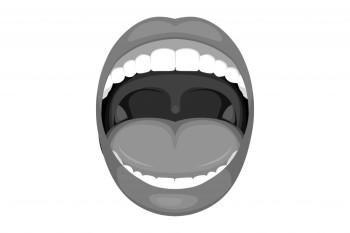movingstarvoices.org – Language is one of humanity’s most remarkable achievements, allowing us to convey complex ideas, emotions, and information. At the heart of this intricate system lies the physical act of speaking, where the mouth plays a crucial role. From the movement of the lips to the positioning of the tongue, each component contributes to the sounds that form words and sentences. This article explores how the mouth shapes language and the art of speaking.
The Anatomy of Speech
The human mouth is a sophisticated apparatus designed to produce a wide range of sounds. Key components include the lips, teeth, tongue, hard and soft palate, and vocal cords. Each part has a specific function in speech production:
- Lips: Essential for creating sounds like “p,” “b,” and “m,” the lips can close, open, and form various shapes to modify the airflow.
- Teeth: Working alongside the tongue, teeth help create sounds such as “t,” “d,” and “s.”
- Tongue: Perhaps the most versatile of all speech organs, the tongue can alter its position to produce a vast array of sounds, from the “l” in “love” to the “r” in “run.”
- Palates: The hard and soft palates help in differentiating nasal sounds like “n” and “m” from oral sounds.
- Vocal Cords: Located in the larynx, these cords vibrate to produce voiced sounds, such as “v” and “z.”
The Process of Articulation
Articulation is the process by which the mouth shapes sounds into recognizable words. It involves precise coordination between the brain and the muscles of the mouth. This process can be broken down into several stages:
- Initiation: The brain sends signals to the vocal cords to start vibrating, creating a sound wave.
- Phonation: The vocal cords adjust tension and length to control pitch and volume.
- Resonation: Sound waves are amplified and modified as they pass through the throat, mouth, and nose.
- Articulation: The mouth’s muscles shape these sound waves into distinct phonemes, the building blocks of language.
The Influence of Culture and Environment
The specific sounds and words a person can produce are influenced by their linguistic environment. Different languages utilize different phonemes, which can shape the physical development of the speech organs over time. For example, the “th” sounds in English are uncommon globally and can be challenging for non-native speakers.
The Role of Practice and Training
Like any art form, mastery of speaking requires practice. Public speakers, actors, and singers often undergo extensive training to perfect their diction, control their breath, and project their voice. Techniques such as tongue twisters and breath control exercises can enhance clarity and expressiveness.
Conclusion
The art of speaking is a testament to the complexity and adaptability of human communication. By understanding the role of the mouth in shaping language, we gain insight into the mechanics of speech and its cultural significance. Whether learning a new language or refining one’s speaking abilities, recognizing the intricate dance between the brain and the mouth is key to mastering the spoken word.
